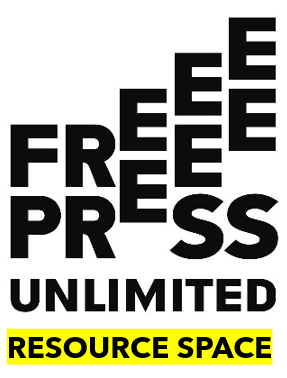There are a number of measures that can be taken in the workplace to promote gender equality. On this page you can find:
Gender policies
A gender policy is an important starting point for the systematic integration of gender into the work of an organisation. Media outlets can also include gender in their editorial policy, outlining how they will report in a gender-sensitive way.
According to the handbook Gendered Manager in the Media by Women in News, a gender policy should contain the following elements:
- Introduction and background
- Vision and policy statement
- Principles and guidelines
- Situation and analysis
- Employment practices
- Gender action plan
- Monitoring and evaluation
Best practices for trans-friendly workplace policies
Trans Journalists Association has created an overview of best practices to help employers make their workplaces more supportive for transgender employees.
Workplace measures
Establishing a gender equality policy is often only the first step in promoting gender equality in an organisation. There are many aspects that influence the situation in an organisation and therefore many things to take into account when addressing gender inequality.
In its guidelines to create an enabling environment for gender equality in the United Nations system, UN Women distinguishes three thematic areas to increase inclusiveness and diversity, namely: flexible working arrangements, family-friendly policies and common standards of conduct (to reduce misconduct, abuse of power and harassment).
Other successful strategies include:
- Fair hiring and promotion processes
- Support and involvement of senior (male) leaders and managers
- Action plans and accountability (measuring and reporting)
- Role models and mentors
- Effective anti-sexual harassment mechanisms
- Initiatives to promote a safe working environment
- Fostering inclusive and respectful cultures
- Proper work-life balance (flexible work hours, parental leave)
- Training and development of employees of all genders
- Equal pay
Learn more
The report WINning strategies by Women in News (WAN-IFRA) presents case studies of media organisations achieving gender diversity.
The Trans Journalist Association developed a guide for supporting employees coming out as transgender.
Gender audit
A gender audit is a tool to assess to what extent gender equality is institutionalised in an organisation. It helps organisations identify and understand gender patterns with regards to structures, processes, culture, staff and the design and delivery of activities. A gender audit can be a baseline to identify opportunities and challenges with regard to gender equality, and to keep track of progress.
Learn more
Gender Audit tool by the European Institute for Gender Equality provides more information about gender audits and how to implement them.
Find an gender audit facilitator
ITCILO provides a database of certified gender audit facilitators.
There are many methodologies that can be used to conduct gender audits. An audit usually involves a review of an organisation’s structures and policies, as well as consultation with a wide range of its staff.
Before starting, it is essential to assess the readiness of an organisation for a gender audit, including the commitment of management and clear communication with everyone involved about the process.
During an audit, it is essential to capture feedback from all parts of an organisation. Consultations with staff can take place via interviews, surveys or focus group discussions.
The process of conducting a gender audit can already contribute to gender equality in an organisation, because it creates time and space to have structured discussions about gender.
Based on the gender audit, a gender action plan should be drafted to improve gender equality within the organisation.
Methodology
Gender Audit Handbook by InterAction provides a step by step guide to conducting a gender audit.
Journalist unions
Women are underrepresented in press councils and unions, and struggle to reach leadership positions. The latest gender-segregated data on unions available is from 2001 and found that women journalists represented 29 percent of union membership and 17 percent of members in union governing bodies. In some countries, unions specifically for women journalists have been set up to represent their interests.
A higher representation of women in mainstream journalist unions is needed in order to reflect and advocate for gender equality in media. Unions have the potential to address issues such as the gender pay gap, working conditions, access to training and leadership opportunities, harassment and intimidation in the workplace, and gender portrayal in the media.
Read more
The report ‘Getting the Balance Right: Gender Equality in Journalism’ by IFJ and UNESCO has a chapter about women in journalist unions.
Tools & resources
| Flip the Script by Catalyst provides great infographics and tools on how you can change harmful language and terms to create a more inclusive workplace |
| The report WINing Strategies by Women in News provides case studies and lessons learned in increasing gender diversity in media organisations |
| The Trans Journalists Association has created resources to help employers make their workplaces more supportive for transgender employees. |
| Gender Audit Handbook by InterAction |
| Gender Audit Tool by the European Institute for Gender Equality |
| Sexual Harassment Toolkit by Women in News |
